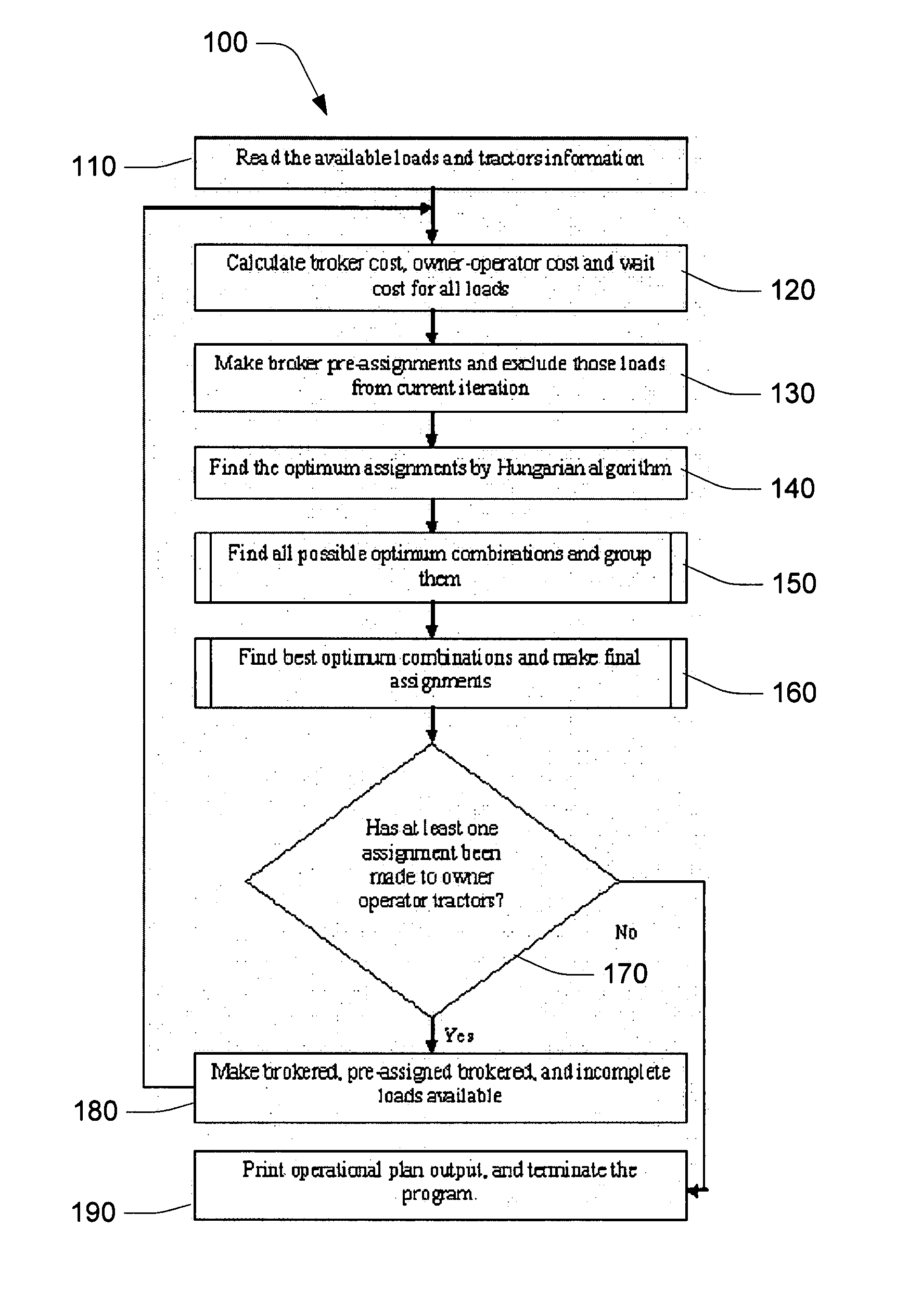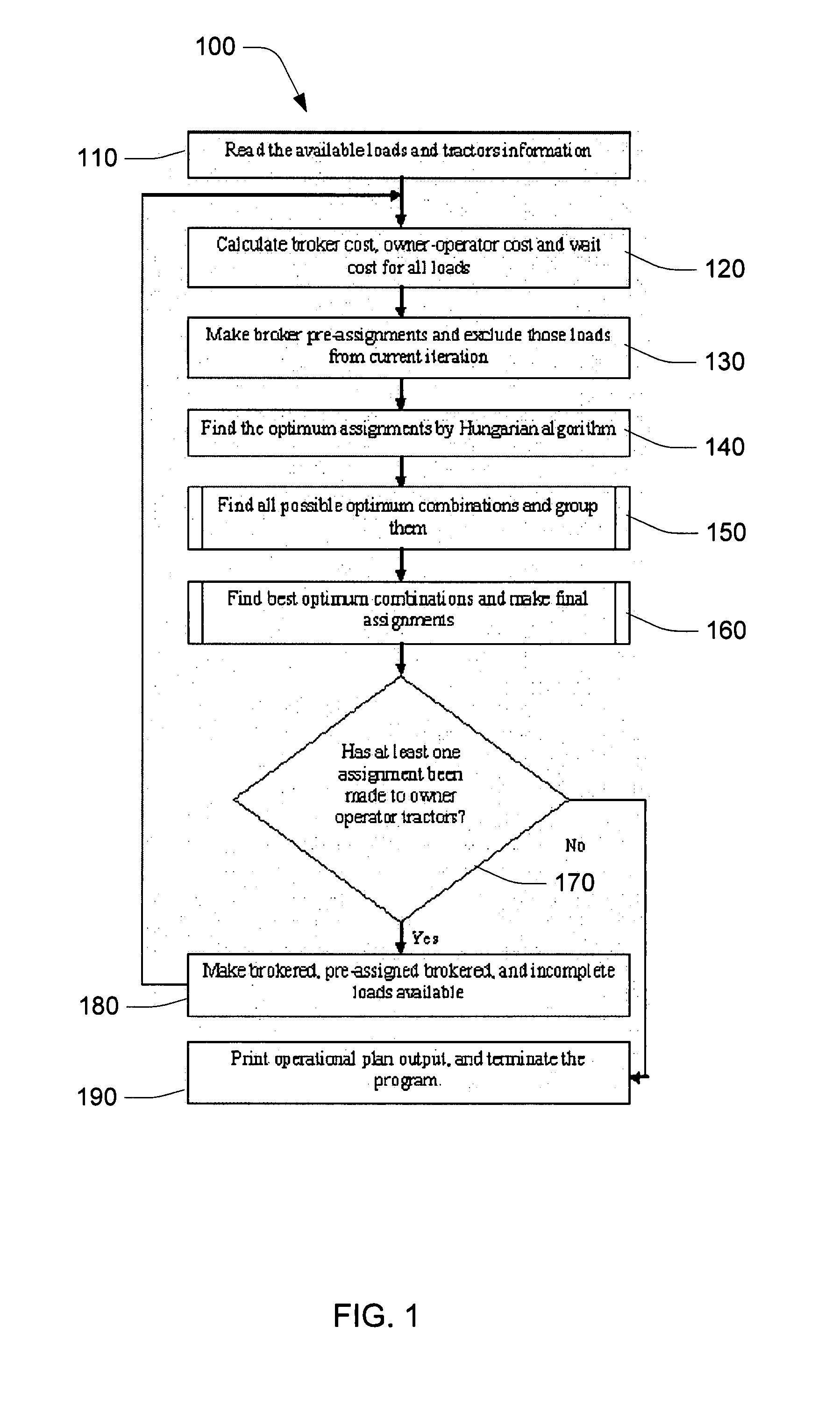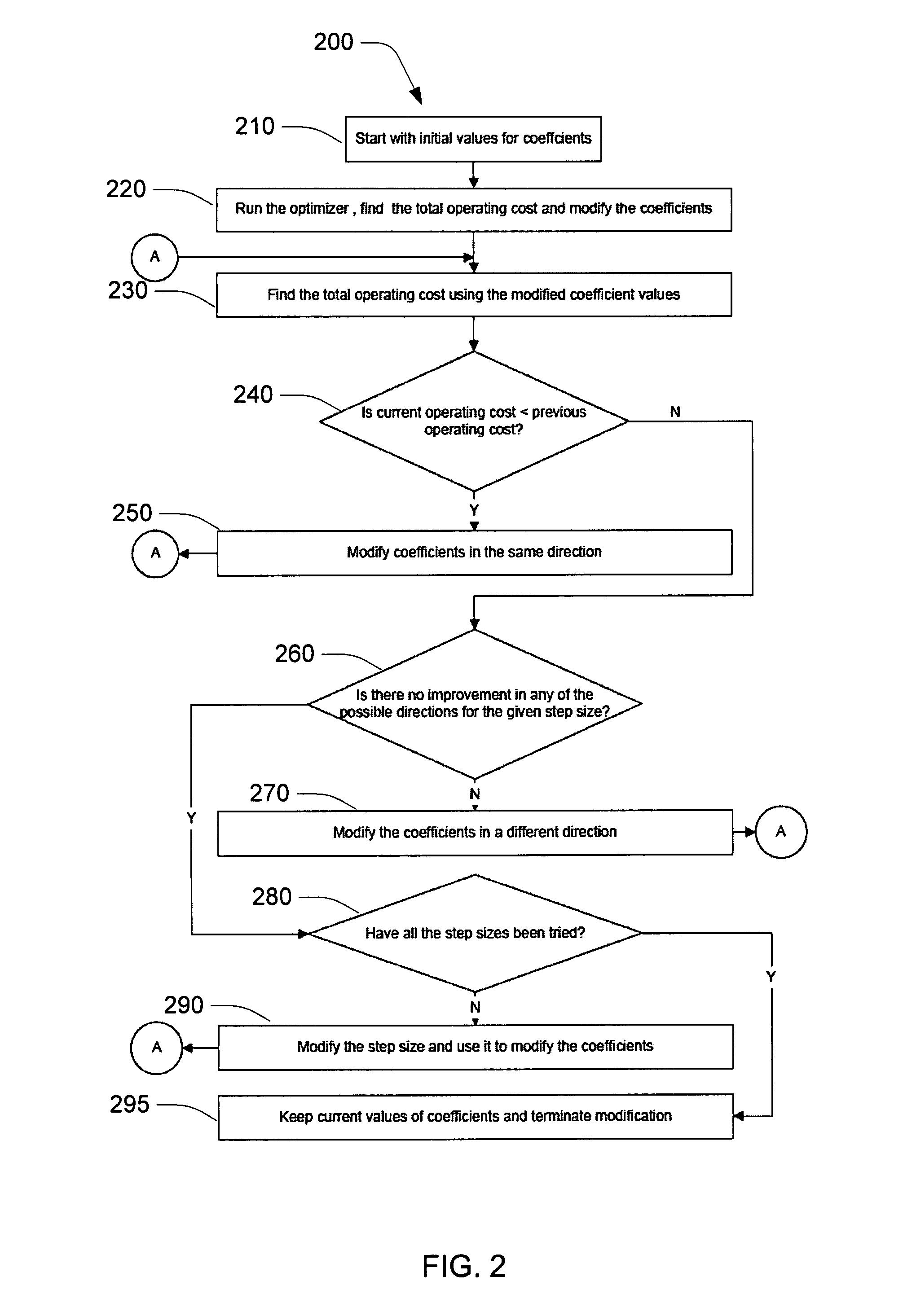System and method suitable for optimizing linehaul operations
- Summary
- Abstract
- Description
- Claims
- Application Information
AI Technical Summary
Benefits of technology
Problems solved by technology
Method used
Image
Examples
Example
[0097]Like reference numerals are used in different figures to denote similar elements.
DETAILED DESCRIPTION OF THE DRAWINGS
Terminology
[0098]As used in the present description, appended claims, and drawings, the term unit refers to a unit of transport such as for example a container, trailer, or car load. The use of the term trailer or tractor or equivalent in the examples is illustrative only for applicability to the trucking mode of transportation and in no way limits the applicability of the present invention to other modes of transportation than trucking. The invention finds applicability to linehaul operations such as but not limited to trucking, busing, navigation, aviation, rail, and any other mode of transportation and combinations thereof. Furthermore, the use of the two countries Canada and United States in the specification is exemplary only. Application of the invention to other countries is obvious in view of the present specification, drawings, and claims.
[0099]As used ...
PUM
 Login to View More
Login to View More Abstract
Description
Claims
Application Information
 Login to View More
Login to View More - R&D
- Intellectual Property
- Life Sciences
- Materials
- Tech Scout
- Unparalleled Data Quality
- Higher Quality Content
- 60% Fewer Hallucinations
Browse by: Latest US Patents, China's latest patents, Technical Efficacy Thesaurus, Application Domain, Technology Topic, Popular Technical Reports.
© 2025 PatSnap. All rights reserved.Legal|Privacy policy|Modern Slavery Act Transparency Statement|Sitemap|About US| Contact US: help@patsnap.com



